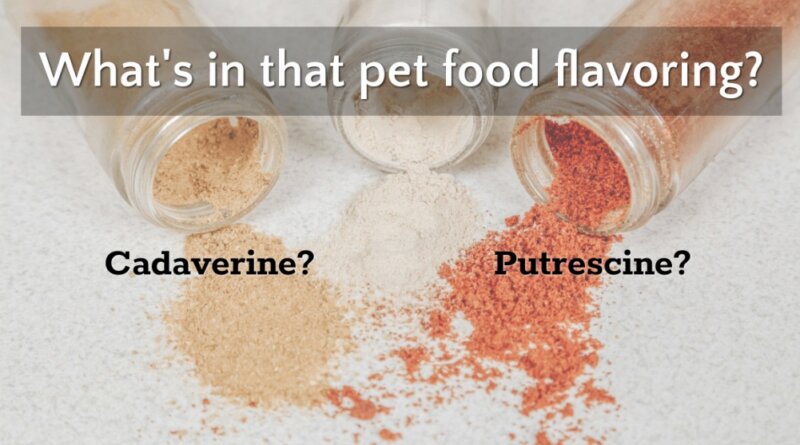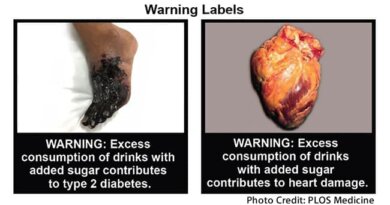The Mystery of Pet Food Flavorings – Truth about Pet Food
The FDA has stated ingredients in pet food flavorings are proprietary, comparing them to a chef’s secret recipe. For pet owners, pet food flavorings remain a mystery.
In 2013 Popular Science provided pet owners a glimpse of what pet food flavorings consist of. From The Chemistry of Kibble: “To meet nutritional requirements, pet food manufacturers blend animal fats and meals with soy and wheat grains and vitamins and minerals. This yields a cheap, nutritious pellet that no one wants to eat.“
The story featured one pet food flavoring business, AFB International. “AFB makes flavor coatings for dry pet foods. To test the coatings, the company needs to make small batches of plain kibble to put them on. The coated kibbles are then served to consumers: Spanky, Thomas, Skipper, Porkchop, Momo, Elvis, Sandi, Bela, Yankee, Fergie, Murphy, Limburger, and some 300 other dogs and cats that reside at the company’s Palatability Assessment Resource Center (PARC), about an hour’s drive from its St. Louis–area headquarters.”
More quotes from The Chemistry of Kibble:
“Pet foods come in a variety of flavors because that’s what humans like, and we assume pets like what we like. We’re wrong. This is where “palatants” enter the scene. AFB designs powdered flavor coatings for the edible extruded shapes.”
“Outdoor cats tend to be either mousers or birders, but not both. But don’t worry: Most of the difference between Tuna Treat and Poultry Platter is in the name and the picture on the label. “They may have more fish meal in one and more poultry meal in another,” says Moeller, “but the flavors may or may not change.”
“Pyrophosphates have been described to me as “cat crack.” Coat some kibble with it, and the pet food manufacturer can make up for a whole host of gustatory shortcomings.”
“Dogs rely more on smell than taste in making choices about what to eat and how vigorously. The takeaway lesson is that if the palatant smells appealing, the dog will dive in with instant and obvious zeal, and the owner will assume the food is a hit. When in reality it might have only smelled like a hit.”
“The challenge is to find an aroma that drives dogs wild without making their owners, to use an Amy McCarthy verb, yak. “Cadaverine is a really exciting thing for dogs,” says Rawson. “Or putrescine.” But not for humans. These are odoriferous compounds given off by decomposing protein. I was surprised to learn that dogs lose interest when meat decays past a certain point. It is a myth that dogs will eat anything. “People think dogs love things that are old, nasty, dragged around in the dirt,” Moeller tells me. But only to a point, he says. “Something that’s just starting to decay still has full nutritional value. Whereas something that bacteria have really broken down—it’s lost a lot of its nutritional value, and they would only eat it if they had no choice.” Either way, a pet owner doesn’t want to smell it.”
Wikipedia describes cadaverine as: “Cadaverine is a foul-smelling diamine compound produced by the putrefaction of animal tissue.”
Wikipedia describes putrescine as: “A colorless liquid, it is related to cadaverine; both are produced by the breakdown of amino acids. The two compounds are largely responsible for the foul odor of putrefying flesh…”
Another flavor ingredient supplier – Trilogy Essential Ingredients – provides the following information:
“Most flavors for pet food are divided into two general classes (1) reaction flavors/digests and (2) compounded flavors. Both can have liquid or dry forms and be added internally or externally to the food matrix. In other words, the complete reacted flavor can be added to the final product (eg. Kibble) or the flavor can be designed to react during the processing of the pet food. Compounded flavors are exactly what the name implies, and are very similar to the flavors created for humans. Reacted/digest flavors often utilize the hydrolysates of a meat, fish, vegetable, or grain as a source of free amino acids necessary for Maillard reactions. The flavorist will employ a variety of hydrolysis schemes in order to generate the desired free amino acid profile for the end flavor desired. In combination with this amino acid mixture, the flavorist chooses carbohydrate sources for the necessary carbonyls to promote a reaction. Precursor flavors can be added at this point prior to the actual reaction. Like other reaction flavors, they can be produced under atmospheric or pressurized conditions and at various temperatures. Post reaction is the preservation phase where the final flavor will be stabilized with several ingredients to slow oxidation and inhibit yeast, mold, and bacterial growth.”
And the FDA gives us this information about flavors:
“With respect to flavors, pet foods often contain “digests,” which are materials treated with heat, enzymes and/or acids to form concentrated natural flavors. Only a small amount of a “chicken digest” is needed to produce a “Chicken Flavored Cat Food,” even though no actual chicken is added to the food. Stocks or broths are also occasionally added. Whey is often used to add a milk flavor. Often labels will bear a claim of “no artificial flavors.” Actually, artificial flavors are rarely used in pet foods. The major exception to that would be artificial smoke or bacon flavors, which are added to some treats.”
The two most concerning parts of pet food flavors are:
- Pet owners are not told what ingredients are in the flavor – that information is withheld from us with FDA permission.
- The industry’s attitude of flavors is to entice pets to eat products they wouldn’t normally eat.
Several years ago, at an AAFCO meeting, I asked FDA why ingredients of pet food flavors are not disclosed – sharing that pet owners want this information. The FDA representative stated flavors are similar to secret recipes of chefs, they are proprietary information of every manufacturer and the manufacturer is not required to disclose to the consumer that secret.
Personal opinion: cadaverine and/or putrescine are NOT something I want my pets to consume (and it’s not something I want in my house, kitchen, pantry, so on). Any pet food flavored with putrefying animal tissue should be required to include a warning label.
Wishing you and your pet(s) the best,
Susan Thixton
Pet Food Safety Advocate
Author Buyer Beware, Co-Author Dinner PAWsible
TruthaboutPetFood.com
Association for Truth in Pet Food

Become a member of our pet food consumer Association. Association for Truth in Pet Food is a stakeholder organization representing the voice of pet food consumers at AAFCO and with FDA. Your membership helps representatives attend meetings and voice consumer concerns with regulatory authorities. Click Here to learn more.
What’s in Your Pet’s Food?
Is your dog or cat eating risk ingredients? Chinese imports? Petsumer Report tells the ‘rest of the story’ on over 5,000 cat foods, dog foods, and pet treats. 30 Day Satisfaction Guarantee. Click Here to preview Petsumer Report. www.PetsumerReport.com
Find Healthy Pet Foods in Your Area Click Here

The 2021 List
Susan’s List of pet foods trusted to give her own pets. Click Here to learn more.




